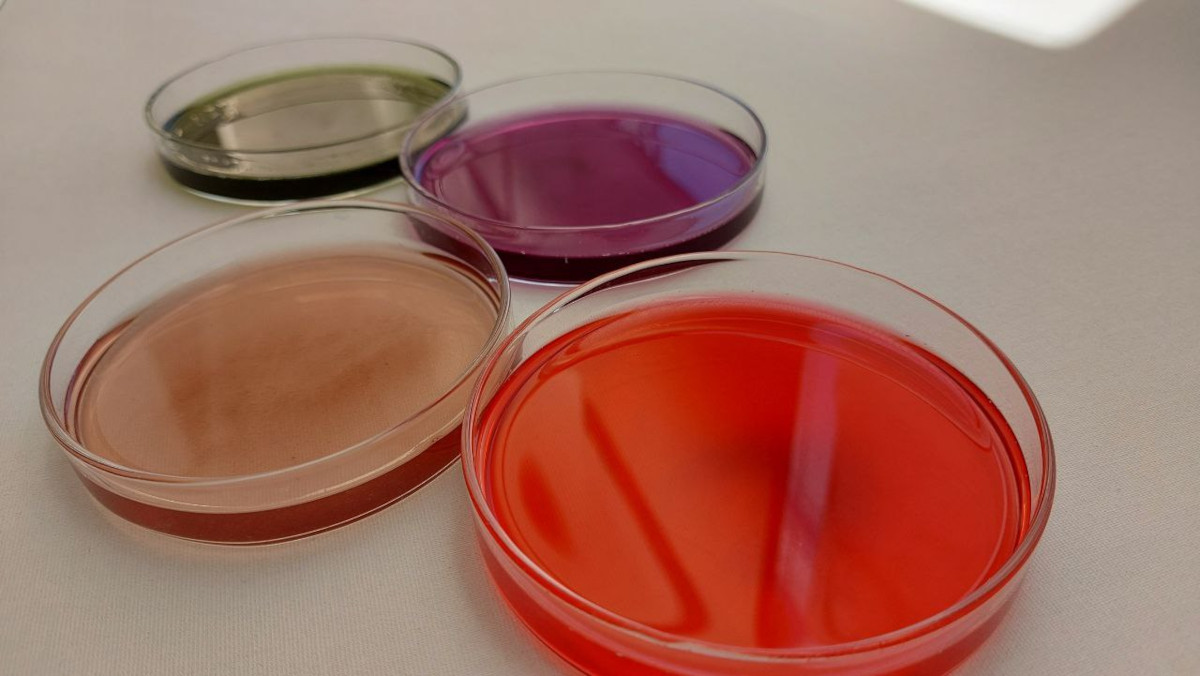4. BioChromes¶
Inspiration¶
The biggest inspiration for this week's assignment, for me, was the view of Cecilia, doing her magic, during the tutorial.

There are a few international designers that use natural dyes in their practices, but I want to introduce you to a Moldova based designer Ekaterina Verbitskaya. You can follow the link and look though her amazing work.
These are pictures of some outfits from one of her collections which is 100% naturally dyed.

Process and workflow¶
We started the work by preparing the textiles. There were four of them: cotton, linen, wool, and silk.
Firstly, we weighed the textiles.
The next stept was scouring - for the plant based textiles we add sodium bicarbonate and them simmer for 1 hour. The animal based fibers need to be cleaned with soap and warm water.
The following step is mordanting - is the most important process of preparing fibers to better absorb color. We used alum, as our mordant.

Dyeing process¶
After preparing the fabrics, we proceeded to the dyeing process. We dyed three colors, at the lab. For that, we used avocado pits, red cabbage and Marigold flowers.
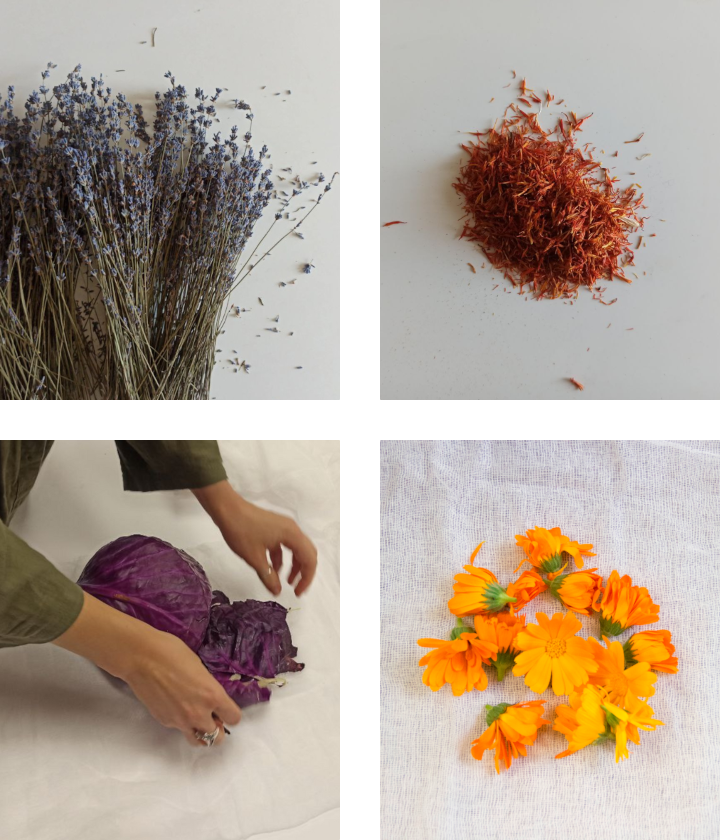
We kept the textiles in the dye bath for 30 minutes, 2 hours and overnight , in order to get different tones and level of intensity of the color.

We also devided the work, and each of us took home 2 ingredients and repeated the process. I took lavender and safflower.
You can see the results I got at home, below.

Results¶
On the pictures below, you can see the results we got.


Color modifications¶
Next thing after coloring the textiles, we proceeded to modifications of the colors. For that, we used 4 modifiers:
- vinegar
- sodium bicarbonate
- iron
- citric acid
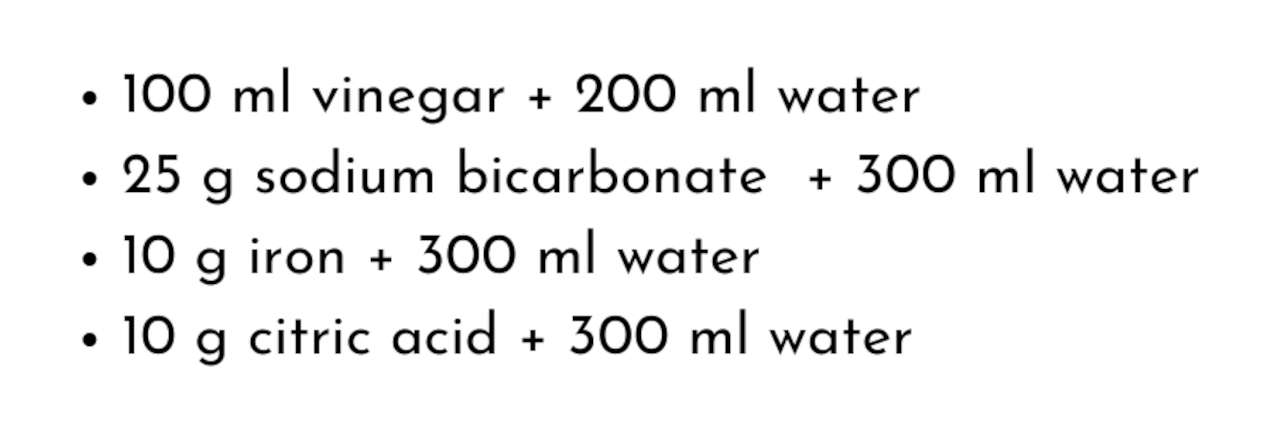

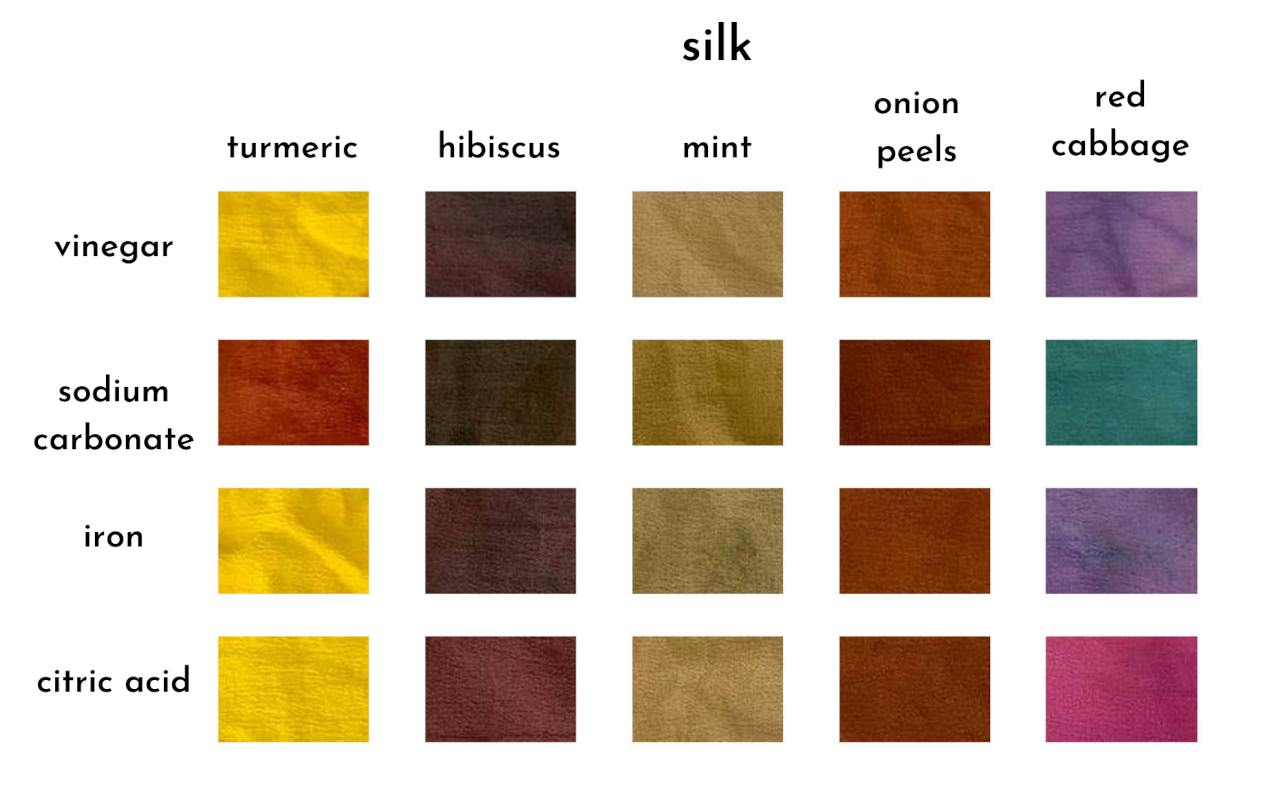
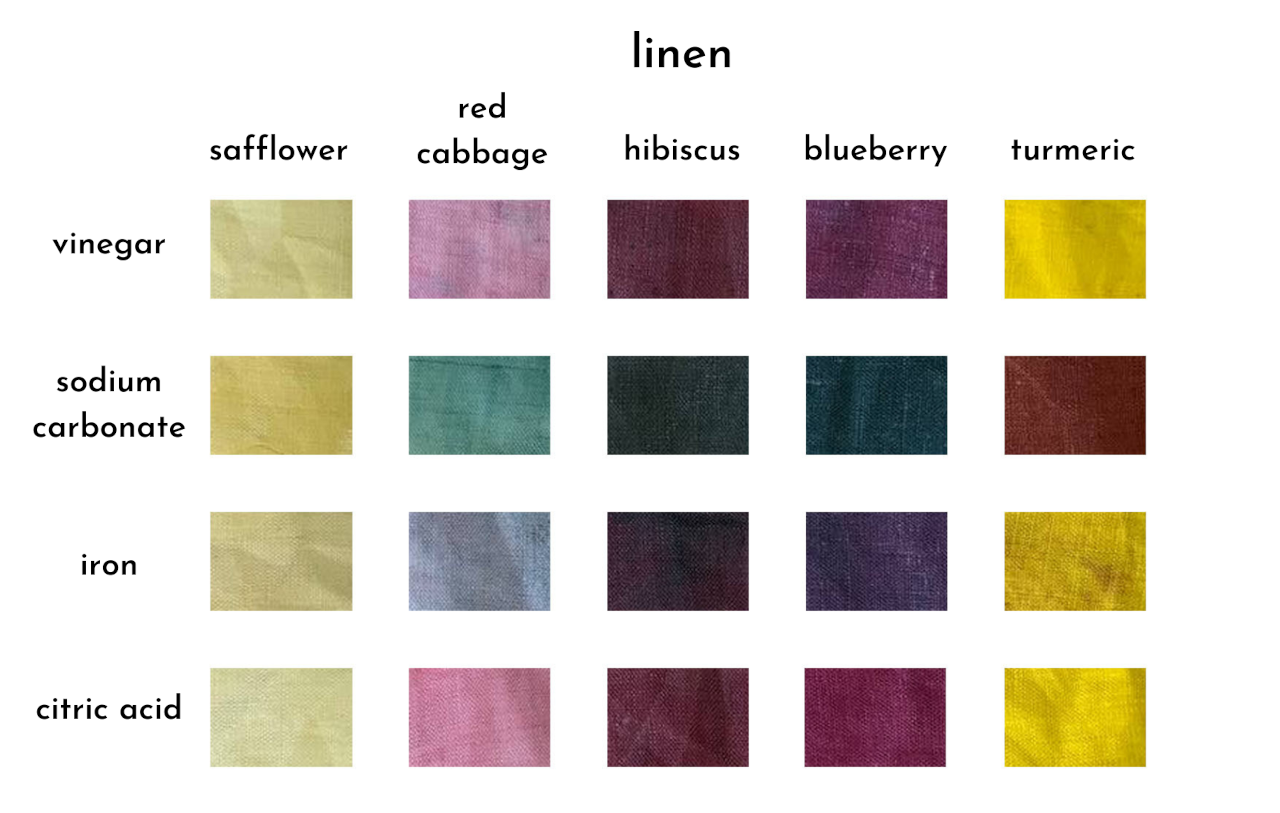


Recycling the dye into inks and pigments¶
Pigments
The left dye was utilized to produce inks and pigments. To create the pigments, a 2:1 ratio of alum to sodium bicarbonate was used, with approximately 300 ml of dye. Initially, the alum was dissolved in hot water, mixed in a jar, and then the sodium bicarbonate, also dissolved in water, was carefully added. After observing the reaction, the mixture was filtered through a coffee filter and allowed to dry.

Inks
To create the ink, the remaining 100 ml of dye was combined with two different ingredients: water and 96% ethanol. The mixture was boiled and stirred, and a binder was required. However, arabic gum was not available, so gelatin, agar agar, and cornstarch were used as substitutes. Modifiers, including citric acid, alum, and sodium bicarbonate, were added to adjust the properties of the ink. Finally, the ink was tested with different modifiers to achieve the desired result.
